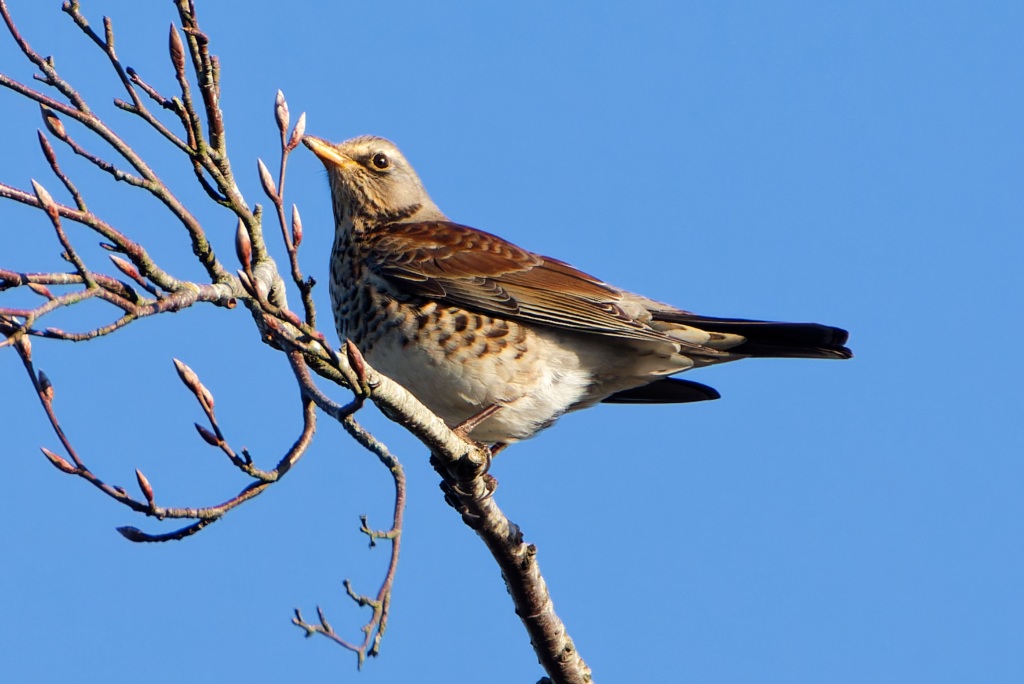
Backwoodsman seized the opportunity presented by a rare sunny day on Tuesday December 5th to take the train to Stepps; Frankfield Loch and Hogganfield Loch are easily accessible from this station. Cold days are good for visits to these Lochs; when they are part-frozen, close approach to waterfowl is possible and some good images have been had on previous visits.
The walking route from the station passes the Cardowan Colliery monument; Cardowan Colliery was Lanarkshire’s last working pit, closing in 1983. Margaret Hilda must have allowed herself an extra treble when it shut. It was strange to read about the colliery and think back to the nineteen-eighties with the ink still drying on reports of Starmer’s praise for MHT’s “vision”. The section of episode four of the BBC radio series Alexei Sayle’s Imaginary Sandwich Bar starting at 08:34 came to mind.
The walk proceeded quietly. Frankfield Loch was completely frozen and bereft of birds, apart from a pair of Mute Swans and a few Black-headed Gulls waiting for better things. The surrounding woodland was silent too. Backwoodsman emerged from its shade onto Hogganfield Loch to be greeted with a dispiriting sight – ice as far as the eye could see. The perimeter path was much quieter than usual; its coating of ice had deterred many of the dog walkers and all the roller bladers (yes, really). Backwoodsman started on a clockwise lap and intercepted some Long-tailed Tits flitting and calling.


The ice began to slacken its grip nearer the coffee stand where there was a nice family group of Whooper Swans, and some pretty Black-headed Gulls, all basking in warm low-angle winter sunlight.
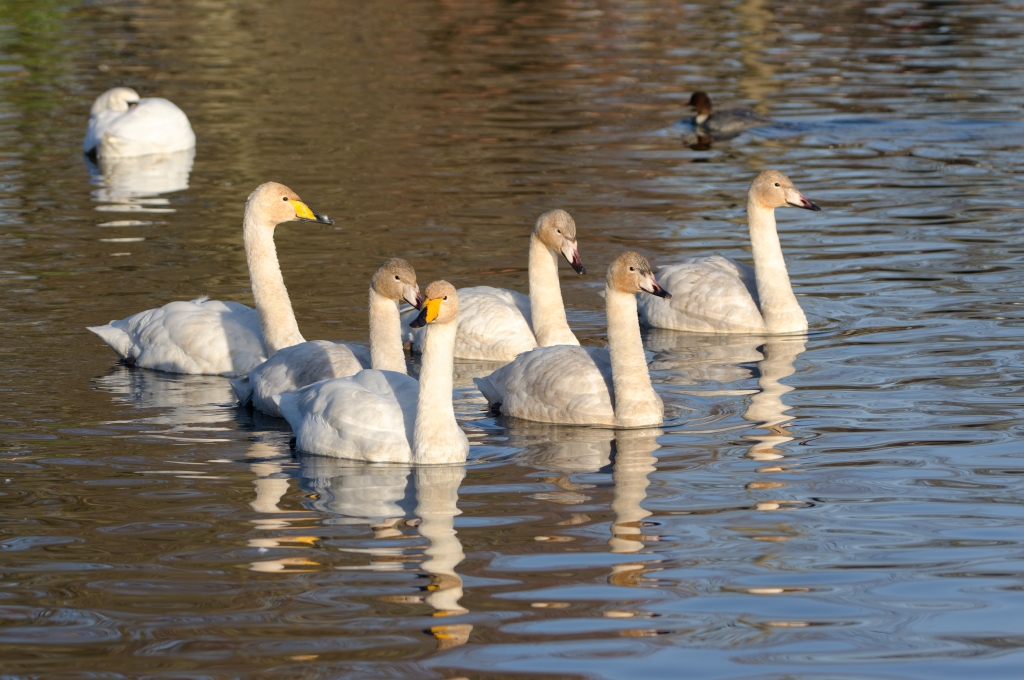
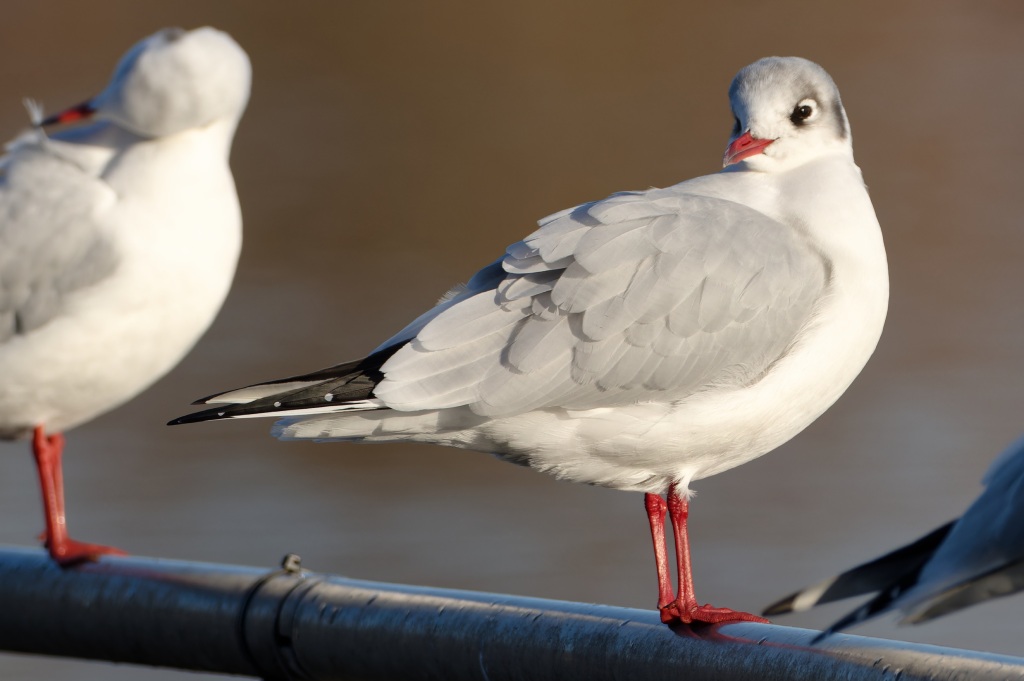
Backwoodsman completed the lap, and was heading back towards Cardowan Moss when he heard a call that he had been hoping to hear. There was a Fieldfare perching in full light and sounds of others from the surrounding area – Backwoodsman’s first sight of these birds this year.
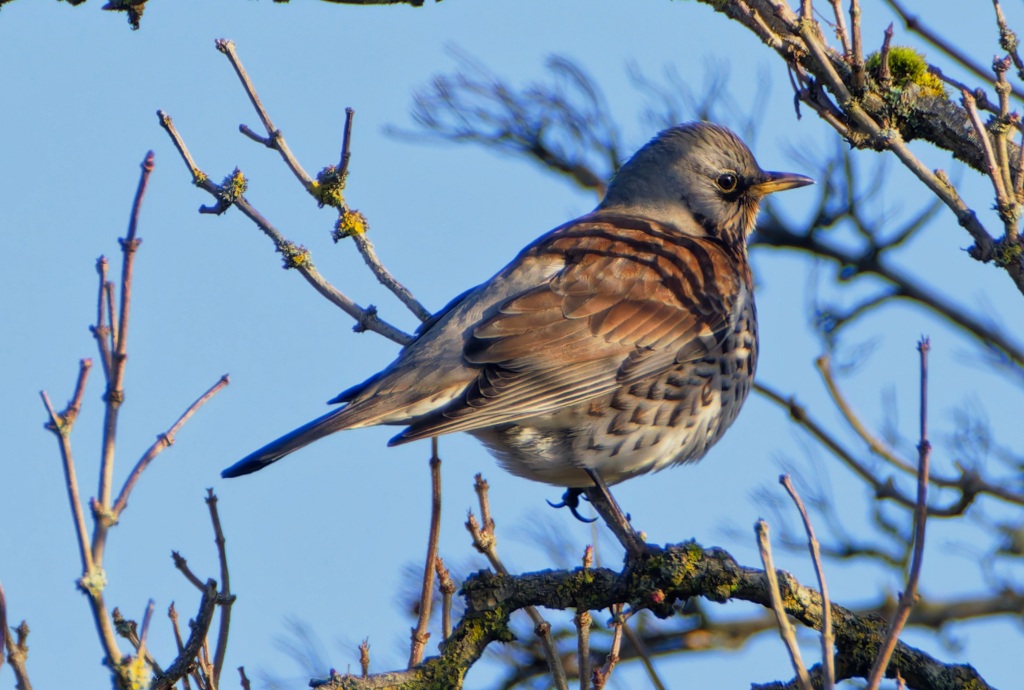
The Fieldfare flew off across the Moss and Backwoodsman carried on walking, hoping to catch up with one or more birds. One walking route skirts the sports fields belonging to the University of Strathclyde and there were Fieldfares foraging on the grass. While these incomers from Fennoscandia are said to favour berries, they are thrushes and are therefore probably pretty good at finding worms and other food on the ground. The light on this patch of grass was undistinguished – oh to have found the Fieldfares in the sunlight which had graced the Loch – so the colours don’t sing. There was the added problem of the University’s rather extra fencing; Backwoodsman is standing back away from the fence, aiming the camera through a gap between bars and waiting for a Fieldfare to hop into clear space, which one of them duly did.

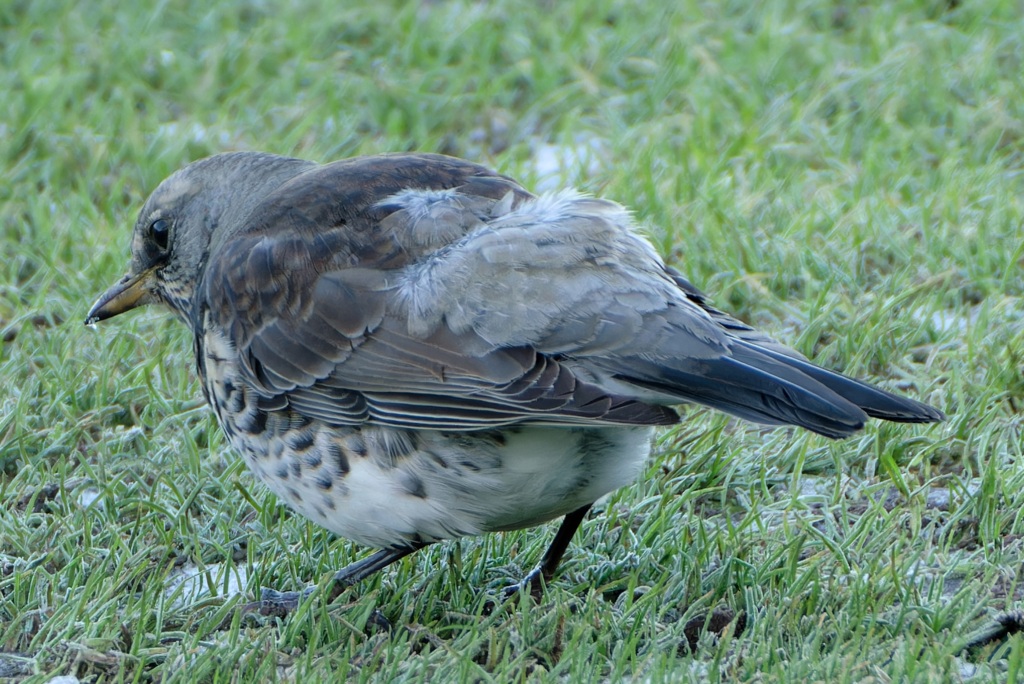
In the irruption year of 2017, it was Fieldfares and not Waxwings which filled the skies of North Glasgow. Certainly some Waxwings had travelled with them but Fieldfares were the main species Backwoodsman saw. All the 2017 sightings were on very dark days and the photographs do not justify reproduction.
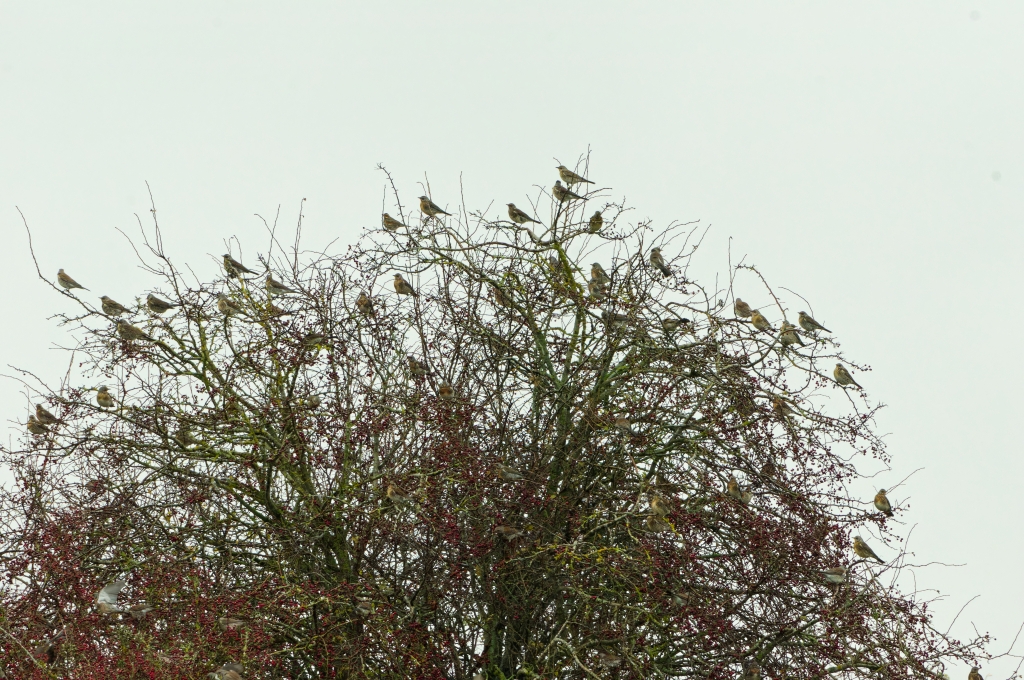
Backwoodsman caught up with Fieldfares again at Barons Haugh in 2019 (a slightly better image), and then in January this year when a group were sitting in a tall tree outside the school in St Peter’s Street and flying to a large and well-laden Cotoneaster in Gladstone Street (it wasn’t possible to get close so there is grain).
The pose in this image is characteristic; the trailing wing tips remind Backwoodsman of a gunslinger twitching his fingers above his six-shooters.
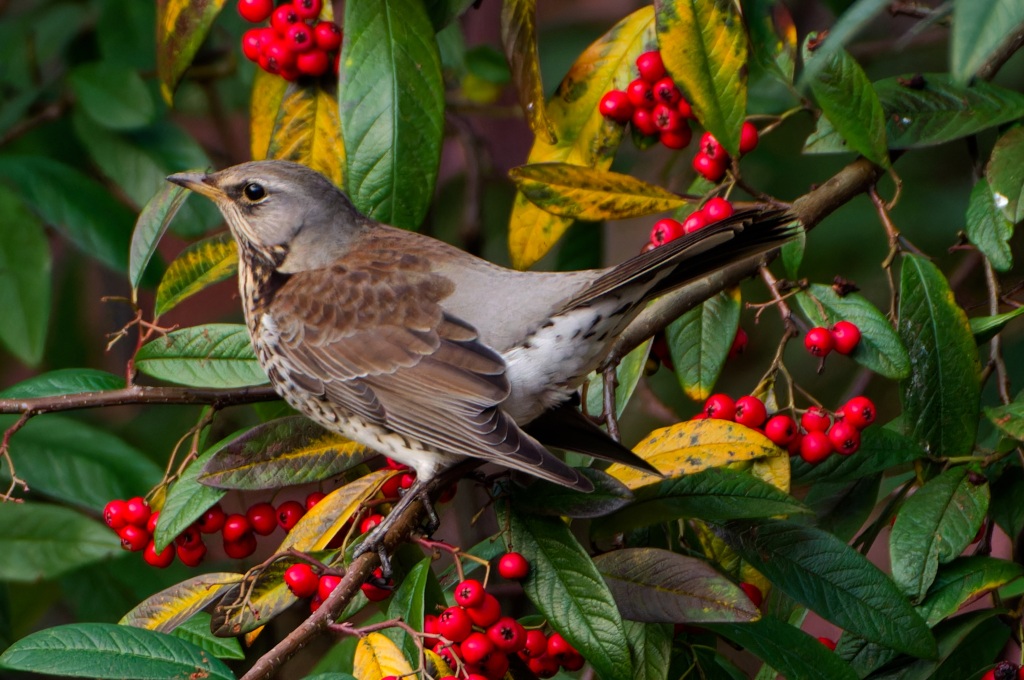
The colours sported by Fieldfares are subtle but glorious. Backwoodsman is particularly taken with the arrow-head markings on the breast; presumably these are the feathers responsible.
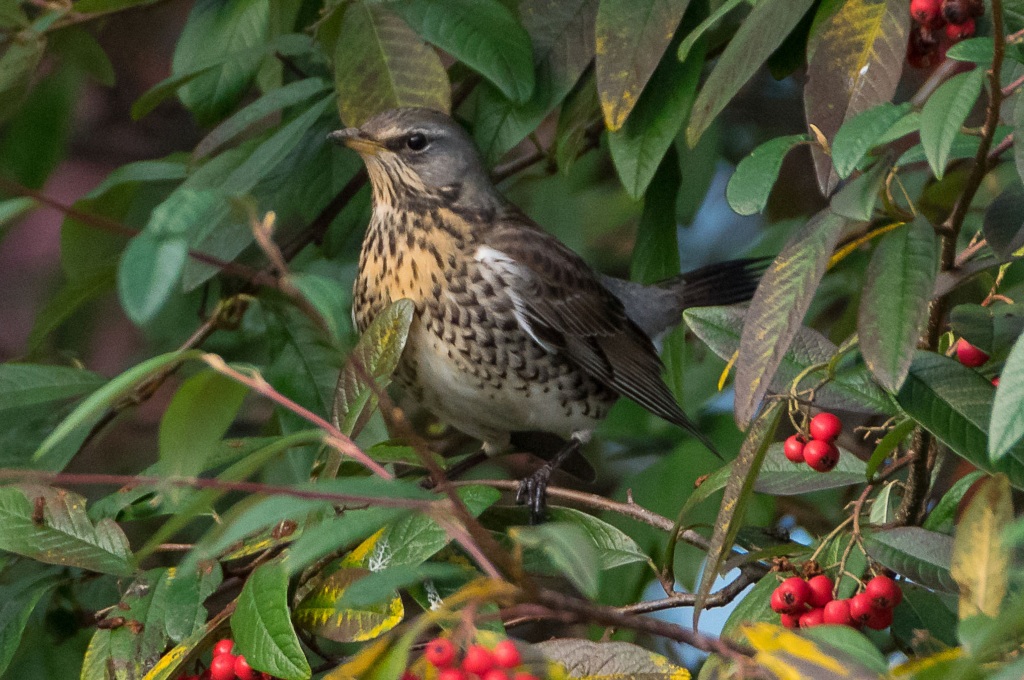
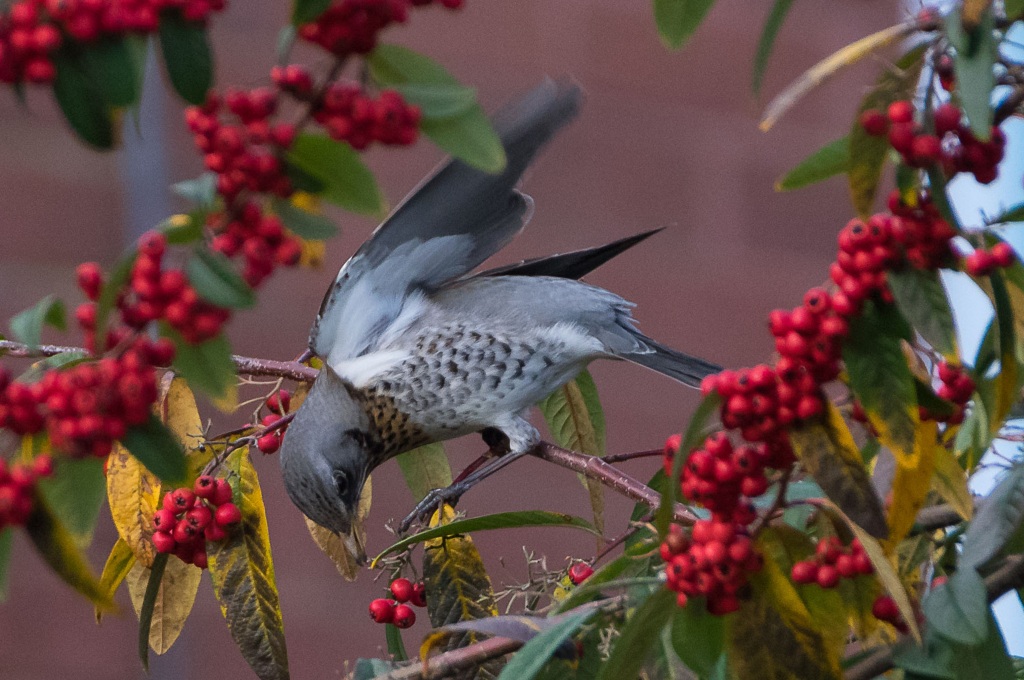

Friday’s run was routed to take in the Gladstone Street tree on the outward leg; a pair of Fieldfares were squabbling over the berries. On to Pinkston Basin and two dozen Fieldfares were looking unsettled, rising from the trees and circling before landing again. On the return trip, the birds were under the Pear trees which have sheltered Backwoodsman on his Roach fishing trips. They rose from the gloom showing pale underwings as the runner passed them; presumably they had been eating what remained of the windfalls. Later on, there were a dozen Waxwings at Speirs Wharf, devouring rosehips from a briar. Backwoodsman stopped running for a while on the basis that they were worth getting cold for, and ran home feeling very fortunate indeed.
